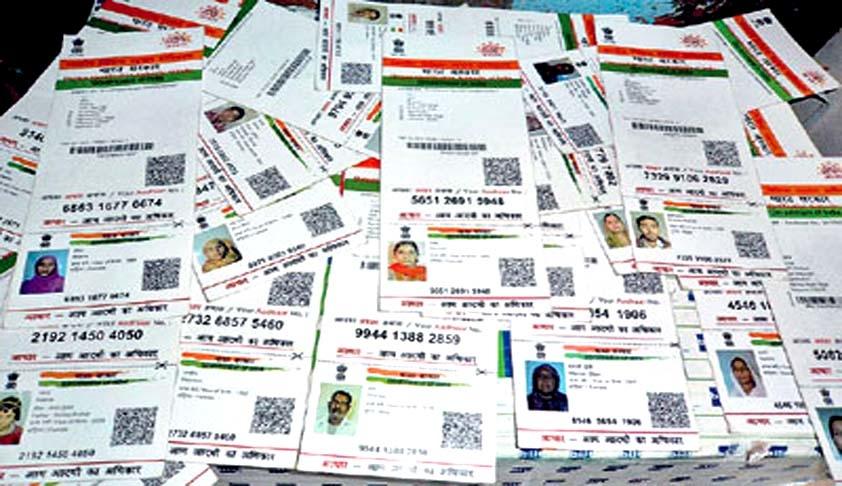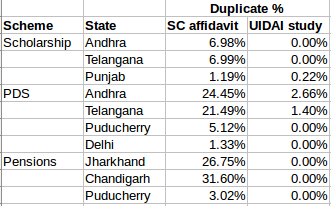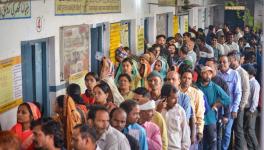Ghosts of Aadhaar: Modi Govt, UIDAI Fabricated Data on Duplicates, Finds IT Activist

The Unique Identification Authority of India (UIDAI) has been fudging data to show duplicate or “ghost” beneficiaries of welfare schemes, to support the Modi government’s claims about Aadhaar – a fraud evidenced by the agency’s own study.
An IT engineer and activist, Anand Venkatanarayanan, has done some number-crunching to find that the UIDAI has been making up numbers – apparently, even those presented before the Supreme Court.
The BJP-led NDA government has been pushing Aadhaar on the premise of welfare, making tall claims about how UID is fighting corruption in delivery of schemes and services. Meanwhile, activists have been crying themselves hoarse over how it has caused the most vulnerable sections of the population to be excluded – for example, the 11-year-old girl child who recently starved to death in Jharkhand.
The claim is that Aadhaar-based biometric authentication for delivery of services has weeded out ghost beneficiaries – people who enrol multiple times with any welfare scheme and loot the government exchequer – and resulted in huge savings for the government. Even the World Bank recently, baselessly claimed that the UID project could save India nearly $11 billion.
“Savings” at the cost of the many millions who are denied their entitlements – a fact that the UIDAI’s own data regarding biometric mismatches and failures stand testimony to.
As Venkatanarayanan found, the Modi government appears to have lied before the Supreme Court in September 2015.
The NDA government submitted figures about ‘de-duplication’ – the detection and elimination of duplicate identities enrolled in welfare schemes – to the apex court. It claimed that over a quarter of the beneficiaries of the Public Distribution System and pensions were found to be duplicate.
Venkatanarayanan compared the data for three welfare schemes in the government affidavit to the SC in September 2015 with the figures of the UIDAI’s own study conducted in August 2014. The study had earlier been published by UIDAI on their website and he had archived it, given that it could be taken down at any point.
He looked at figures for three welfare schemes – PDS, pensions, and scholarships.
Duplicate beneficiaries in any scheme can only be found once the UID number is seeded – the process whereby the number is linked to any scheme.
Let us look at what he found.

In PDS, he looked at Andhra Pradesh, Telangana, Puducherry and Delhi. And he found that, between August 2014 and September 2015, the number of duplicates were higher than the seeded cards in all these places except for Delhi.
This is impossible, because there is no way to detect duplicates until and unless they are included in the service delivery database of service providers, after which Aadhaar-based authentication during service delivery.
Therefore, the maximum number of duplicates can only ever be equal to the number of seeded cards. Which means the affidavit is stating the impossible.

In pensions, he analysed the figures for Jharkhand, Chandigarh and Puducherry. Pensions include old age pensions, disability pensions and widow pensions.
Once again, he found that the duplicates far exceeded the number of seeded accounts.
For example, going by the SC affidavit data for Chandigarh, there was an addition of 300 seeded accounts but there were 1877 extra duplicates.
“In Puducherry, even after more beneficiaries were added by October 2015, the total number of seeded accounts has fallen, which is also not possible,” writes Venkatanarayanan.
Next, he looked at scholarships – which include SC scholarship, ST scholarship and Minorities scholarship – for Andhra Pradesh, Telangana and Punjab.
Strangely, he found that seeded accounts had reduced in number from the time of the UIDAI study in August 2014 to the time of SC affidavit in September in both Telangana and Punjab, while there was no data available for Andhra at all in the study.
Now, it is not possible for seeded accounts to reduce over time, especially given how the government has been strong-arming citizens to get UID and seed them almost everywhere.
The government has been forcing citizens to get the 12-digit biometrics-linked Unique Identification (UID) number by making it mandatory for availing pretty much all of the schemes and services, despite Supreme Court orders.
Even the minimal levels of duplications recorded for a few schemes in the UIDAI study do not necessarily represent corruption on the ground.
Venkatanarayanan elaborates on the seeding process. There are two ways seeding is done: organic (when the beneficiary links their own UID number with a scheme), and inorganic (when seeding is done automatically by UIDAI’s seeding viewer tool).
Both organic and inorganic seeding processes are prone to errors in data, especially the automatic inorganic seeding. An accidental incorrect entry can be flagged as a duplicate.
Duplicates detected through seeding can be considered only as “potential duplicates”, as he says, and physical verification is required to ascertain if they are duplicate or genuine beneficiaries. And confirmed duplicates are usually far lower than suspected duplicates.
In fact, the UIDAI study highlights how big the proportion of mismatches was across different kinds of schemes in August 2014. The percentage of mismatches and invalid numbers, as he terms it, is “staggering” – reaching up to 35% in the old age pension scheme, for example. Even in August 2014, the mismatches were quite high both for PDS and pensions, hovering around a quarter.
All the noise about exorcising ghosts, he says, “distracts citizens from the fact that the Aadhaar project is truly broken in both concept and implementation, and causes massive exclusion in welfare deliver.”
The author then goes on to list some of the ways, which have also been reported, in which data entry errors have been causing exclusions:
- Invalid Aadhar numbers linked with ration cards cause exclusion.
- Wrongly linked Aadhaar numbers to get 100% seeding cause exclusion.
- Name mismatches in Provident Fund will prevent beneficiary from withdrawal.
Had the UIDAI put its own study in the SC affidavit, he says, it would have “proved conclusively that there exists neither an economic nor a welfare justification for the Aadhaar project in welfare delivery”.
Get the latest reports & analysis with people's perspective on Protests, movements & deep analytical videos, discussions of the current affairs in your Telegram app. Subscribe to NewsClick's Telegram channel & get Real-Time updates on stories, as they get published on our website.
























